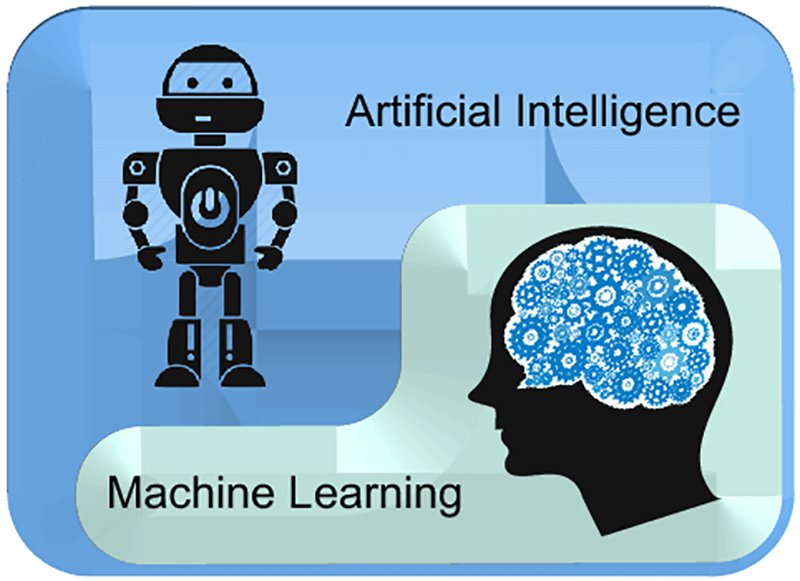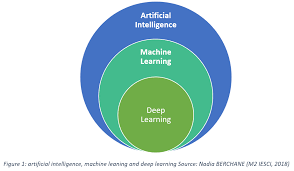Understanding Artificial Intelligence, Machine Learning, and Deep Learning
The fields of artificial intelligence (AI), machine learning (ML), and deep learning (DL) have become pivotal in driving technological advancements across various industries. Though often used interchangeably, each term represents a distinct concept with unique applications and implications.
Artificial Intelligence: The Big Picture
Artificial intelligence is the overarching concept that refers to the simulation of human intelligence in machines. These intelligent systems are designed to perform tasks that typically require human cognition, such as decision-making, language understanding, and visual perception.
AI is categorized into two types: narrow AI and general AI. Narrow AI is designed to perform specific tasks, such as facial recognition or language translation. In contrast, general AI aims to possess the ability to understand and reason across a wide range of tasks at the level of human intelligence—an achievement that remains theoretical at this stage.
Machine Learning: A Subset of AI
Machine learning is a subset of artificial intelligence that focuses on the development of algorithms that allow computers to learn from data. Instead of being explicitly programmed to perform a task, ML models identify patterns in data and improve their performance over time.
The process involves feeding large volumes of data into an algorithm, which then uses statistical methods to learn how to perform a task without specific instructions. This capability makes machine learning particularly effective for tasks like fraud detection, recommendation systems, and predictive analytics.
Deep Learning: A Specialized Branch of Machine Learning
Deep learning is a specialized branch within machine learning that utilizes neural networks with many layers—hence “deep” learning. These neural networks are inspired by the structure and function of the human brain’s network of neurons.
Deep learning has revolutionized fields like computer vision and natural language processing by enabling significant improvements in accuracy and efficiency. This technology powers innovations such as self-driving cars, voice-activated virtual assistants, and real-time translation services.
The Interconnected Future
Together, artificial intelligence, machine learning, and deep learning are driving an era where machines can perform increasingly complex tasks with minimal human intervention. As these technologies continue to evolve, they promise transformative impacts on industries ranging from healthcare to finance.
The future holds exciting possibilities as researchers strive towards more advanced AI systems capable of tackling challenges previously thought insurmountable by machines.
6 Essential Tips for Mastering AI, Machine Learning, and Deep Learning
- Understand the basics of machine learning before diving into deep learning.
- Choose the right algorithm based on the type of data and problem you are working on.
- Feature engineering is crucial for model performance improvement.
- Regularly validate and tune your models to ensure optimal performance.
- Stay updated with the latest research and advancements in AI to enhance your skills.
- Ethical considerations are important when working with AI technologies.
Understand the basics of machine learning before diving into deep learning.
To effectively navigate the realm of artificial intelligence, it is essential to grasp the fundamentals of machine learning before delving into the complexities of deep learning. Machine learning serves as a foundational building block, providing insights into how algorithms learn from data and make predictions. By establishing a solid understanding of machine learning principles, individuals can better appreciate the nuances of deep learning and leverage its advanced capabilities to drive innovation and solve intricate problems across various domains.
Choose the right algorithm based on the type of data and problem you are working on.
When delving into the realms of artificial intelligence, machine learning, and deep learning, a crucial tip to remember is the significance of selecting the appropriate algorithm according to the specific type of data and problem at hand. The effectiveness and efficiency of these technologies heavily rely on matching the characteristics of the data with the strengths of the algorithm. By carefully considering factors such as data complexity, size, structure, and desired outcomes, one can optimize their approach and enhance the chances of achieving accurate results in tasks ranging from pattern recognition to predictive modeling.
Feature engineering is crucial for model performance improvement.
Feature engineering plays a critical role in enhancing the performance of models in artificial intelligence, machine learning, and deep learning. By carefully selecting, creating, or transforming features within the dataset, data scientists can significantly impact the model’s ability to extract patterns and make accurate predictions. Effective feature engineering not only helps in capturing relevant information but also aids in reducing noise and improving the overall efficiency of the model. It is a key step in maximizing the predictive power of algorithms and ensuring that they can generalize well to unseen data, ultimately leading to better outcomes in various applications.
Regularly validate and tune your models to ensure optimal performance.
Regularly validating and tuning models is essential for ensuring optimal performance in artificial intelligence, machine learning, and deep learning applications. As data evolves and new patterns emerge, models can become outdated or less effective over time. By routinely assessing model performance against fresh datasets and making necessary adjustments, one can maintain accuracy and reliability. This process involves techniques such as cross-validation to test how well the model generalizes to unseen data, as well as hyperparameter tuning to find the most effective settings for the algorithms used. Continuous validation and tuning not only enhance model precision but also help in identifying potential biases or errors early on, ensuring that AI systems remain robust and trustworthy in dynamic environments.
Stay updated with the latest research and advancements in AI to enhance your skills.
Staying updated with the latest research and advancements in artificial intelligence, machine learning, and deep learning is crucial for anyone looking to enhance their skills in these rapidly evolving fields. As AI technologies continue to advance, new methodologies, tools, and applications are constantly emerging. By keeping abreast of the latest developments, professionals can not only improve their understanding but also apply cutting-edge techniques to real-world problems. Engaging with academic journals, attending conferences, participating in online courses, and joining professional communities are excellent ways to stay informed and maintain a competitive edge in this dynamic landscape. This proactive approach ensures that one’s knowledge remains relevant and adaptable to the ever-changing demands of the industry.
Ethical considerations are important when working with AI technologies.
Ethical considerations are crucial when working with AI, machine learning, and deep learning technologies due to their profound impact on society. As these technologies become increasingly integrated into daily life, they raise important questions about privacy, bias, and accountability. For instance, AI systems can inadvertently perpetuate or even exacerbate existing biases in data, leading to unfair outcomes in areas like hiring or law enforcement. Additionally, the vast amounts of data required for these technologies often involve sensitive personal information, raising concerns about consent and data security. It is essential for developers and organizations to incorporate ethical guidelines and frameworks into their processes to ensure that AI technologies are used responsibly and transparently, safeguarding public trust and promoting equitable outcomes.




